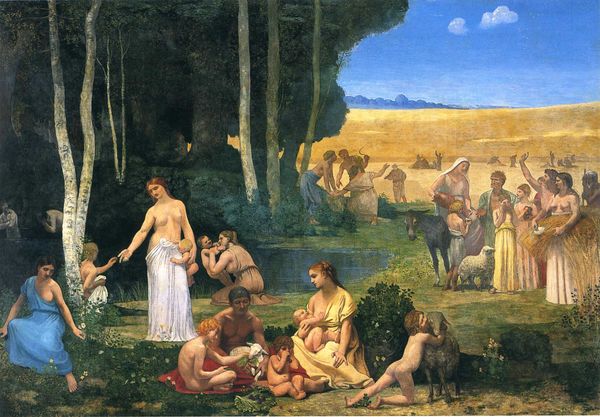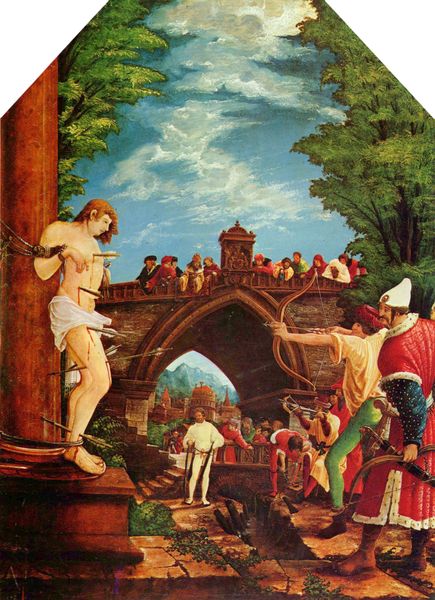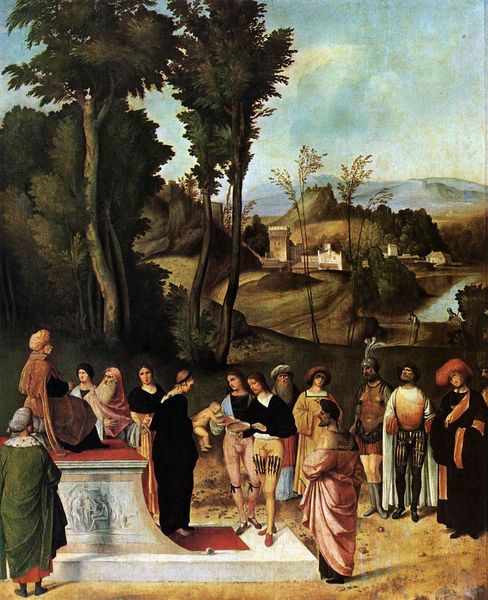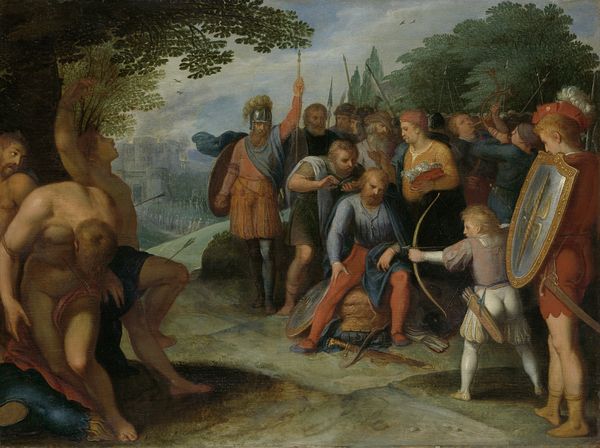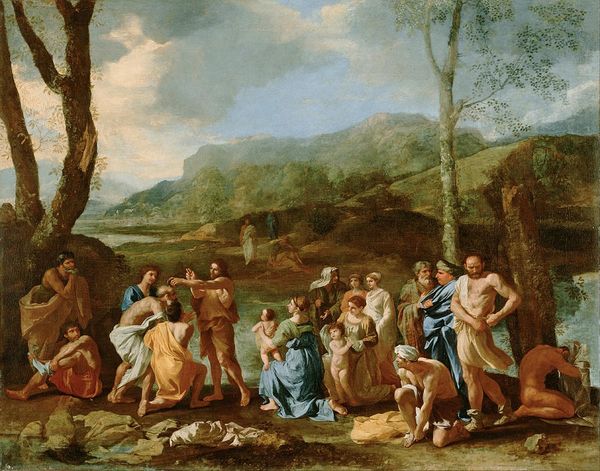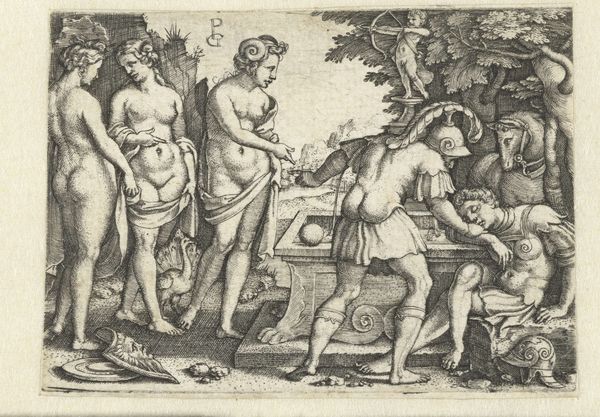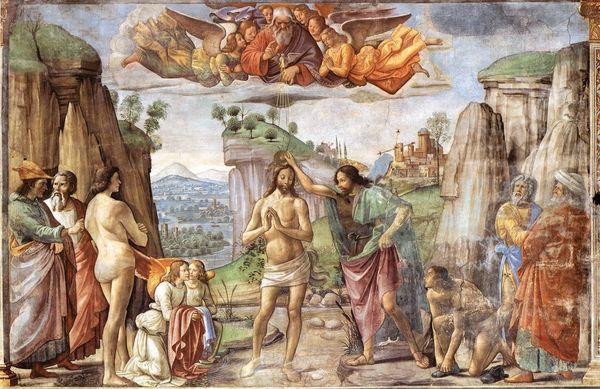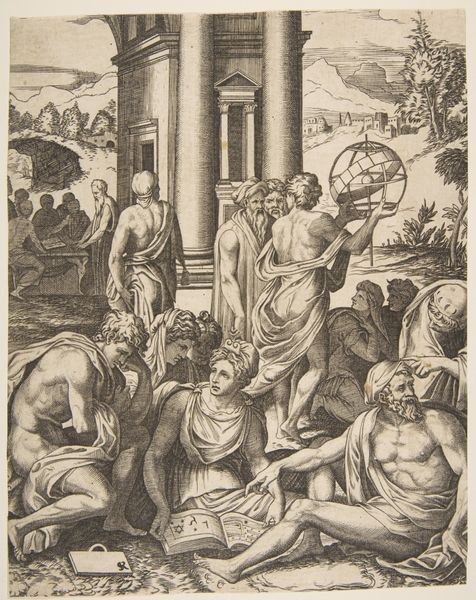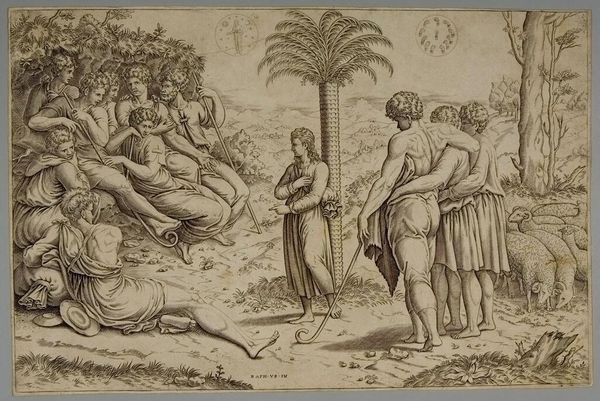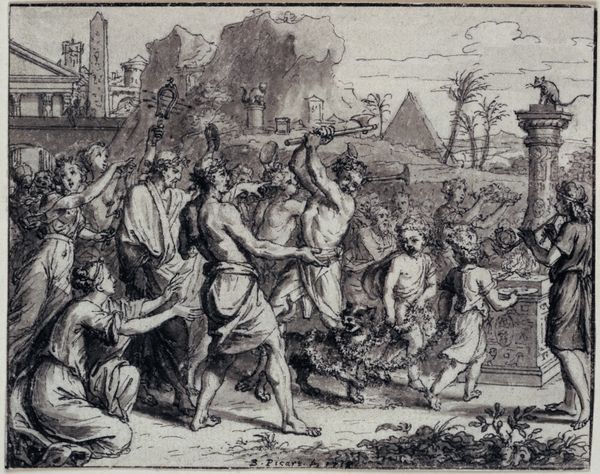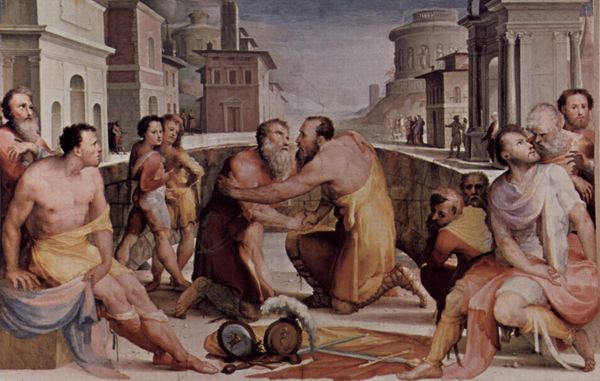
gouache, plein-air
#
gouache
#
allegory
#
gouache
#
plein-air
#
landscape
#
oil painting
#
group-portraits
#
mythology
#
genre-painting
#
history-painting
#
academic-art
Dimensions: 105 x 150 cm
Copyright: Public domain
Editor: Here we have "Autumn," an 1865 gouache painting by Pierre Puvis de Chavannes. It has a distinct sense of subdued energy; the figures are active yet frozen in a classically composed landscape. What do you see in this piece beyond its aesthetic qualities? Curator: Considering the socio-political context, one might interpret this "Autumn" scene through the lens of idealised agrarian life, particularly relevant in post-revolutionary France. It seems to romanticise a pre-industrial harmony, evoking notions of cultural heritage and a desire for a simpler, less tumultuous existence. Editor: So, you're saying it's not just about the harvesting of grapes, but about harvesting a national identity? Curator: Precisely. Notice the figures, arranged almost like a classical frieze, evoking antiquity, but also think about the institutions that would acquire such a work: museums promoting certain narratives about French identity and artistic lineage. What power does the artwork have if presented in this way? Editor: It’s as if it’s saying, "This is our history, our tradition, and our ideal." How subversive that is! Curator: Indeed. It is a way of solidifying and projecting power through visual representation, a tactic of cultural production. Editor: I never considered how an apparently simple scene could be such a carefully constructed statement. Curator: Examining these contexts can unlock a deeper appreciation of its complexities. Next time, look for who and how political powers use art.
Comments
No comments
Be the first to comment and join the conversation on the ultimate creative platform.
